Created to explain newsstand and direct editions, with helpful instructions for identifying which is which. (Does not have sound.)
Category: newsstand
Newsstand Books – The Way It Was
Before the introduction of the direct market in the late-1970s, every comic book was a “newsstand” edition. Comics published from the 1930s to the late-1970s were all newsstand editions, which meant three things: 1) They could be returned for credit if they didn’t sell by a certain date, 2) They were not ordered according to demand, but according to distributor processes, and 3) both serious and casual comic collectors obtained copies of identical comic books, since all books were newsstand editions.
With the introduction of the direct market, comic book publishers were able to supply comic shops with exactly the number of copies of each book that the retailer purchased. Additionally, in exchange for a discount on the price of each comic book, the direct edition books could not be returned for credit. Comic shop owners could decide which books would sell best, which books would be good to keep in the back issue inventory, and which books they didn’t want to purchase at all.
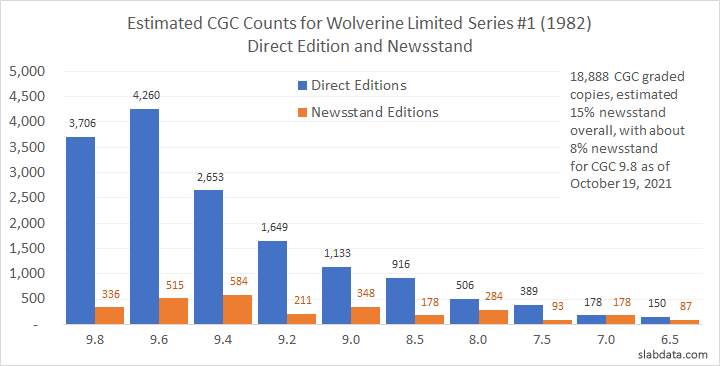
Read the full article for free on GPAnalysis.com.
Amazing Spider-Man #300 Direct and Newsstand
Since CGC began grading comic books in 2000, the most submitted book is Amazing Spider-Man #300 (1988). More than 22,000 copies of ASM #300 have been graded as of May 12, 2020.
The current CGC totals and grades for ASM #300 can be found here:
http://www.cgcdata.com/cgc/search/isolateid/273
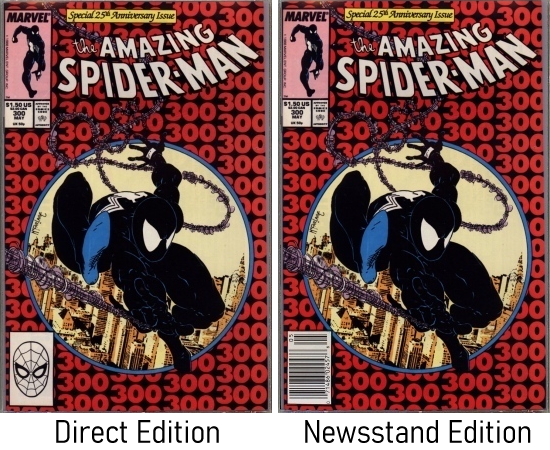
The Direct Edition of ASM #300 was sold to comic book retailers via direct market distributors, having a Spider-Man head on the front cover in the white box on the lower left. Direct editions were sold as non-refundable, in exchange for a discounted price for the retailer. Many dealers ordered extra copies to keep their back issue inventory supplied for years to come.
The Newsstand Edition of ASM #300 with the UPC barcode on the front cover. Newsstand editions of comic books, along with monthly magazines, were most often supplied to locations such as grocery stores, drug stores, gas stations, sandwich shops, and other non-retailer comic shops. Unsold copies of newsstand editions were returned after a month or two for credit, and presumably scrapped, shredded, recycled, or trashed.
More information about Newsstand Editions can be found at Newsstand101.com
As of May 2020, CGC does not differentiate between the Direct Edition and the Newsstand Edition of ASM #300. An evaluation of over 500 copies of ASM #300 in the Ebay.com marketplace on three different dates (January 2016, August 2018, and May 2020) gives a view into the CGC ratios between Direct Edition and Newsstand Edition for ASM #300.
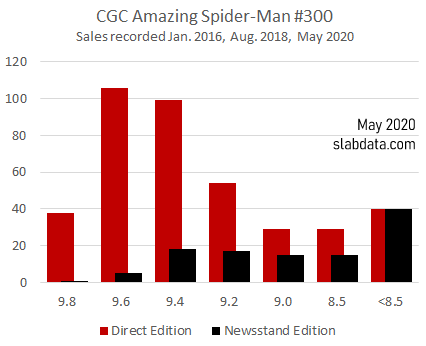
| CGC grade | Direct | Newsstand |
| 9.8 | 38 | 1 |
| 9.6 | 106 | 5 |
| 9.4 | 99 | 18 |
| 9.2 | 54 | 17 |
| 9.0 | 29 | 15 |
| 8.5 | 29 | 15 |
| <8.5 | 40 | 40 |
| TOTAL (506 copies) Average CGC Grade | 395 9.14 | 111 8.36 |
Another view, showing the ratios as X-to-1 for each CGC graded is presented in the graphic below:
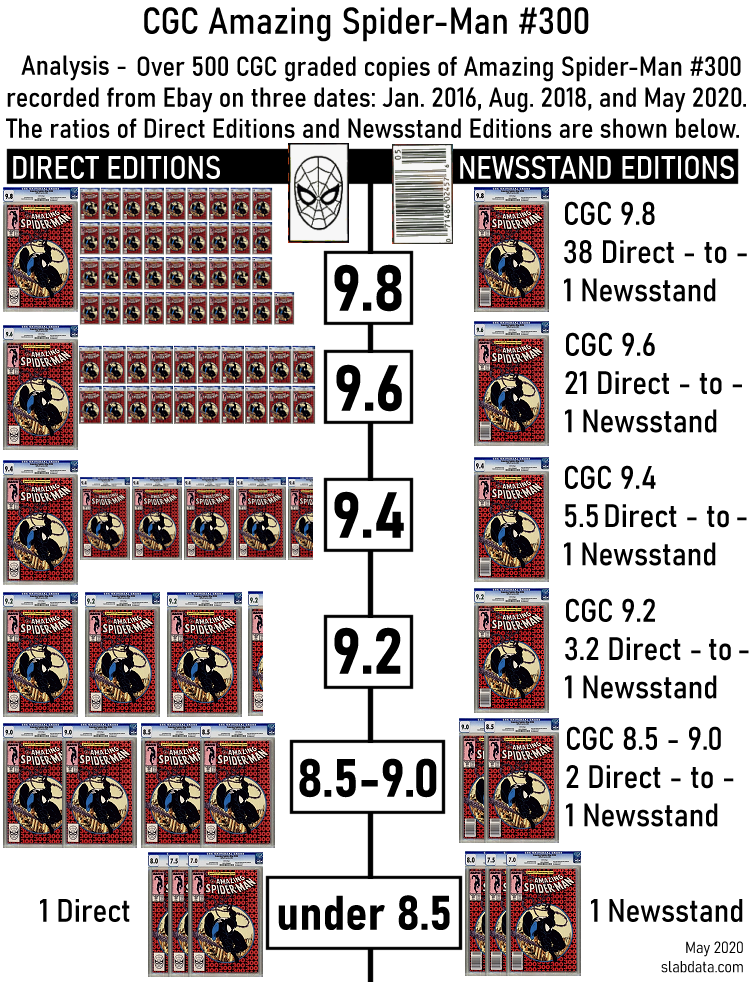
The average CGC grade in the recorded sales for Direct Edition ASM #300 was CGC 9.14, while the average CGC grade for Newsstand Edition ASM #300 was 8.36.
The CGC Census for ASM #300 can be shown with counts for each grade, even though the Direct and Newsstand editions are not separated. The average grade (Universal and Signature Series) is 8.76.
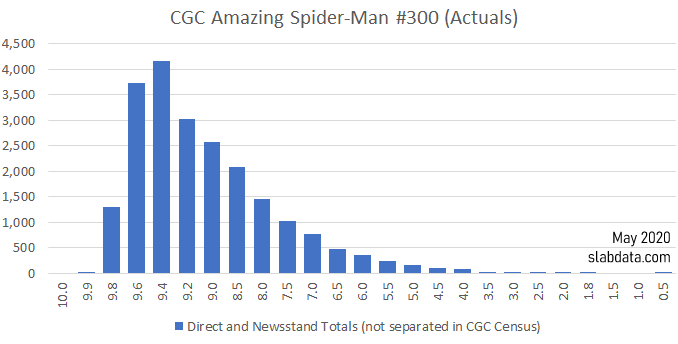
Applying these market ratio estimates to the full CGC Census numbers (22,000+ copies) for ASM #300 results in the following:
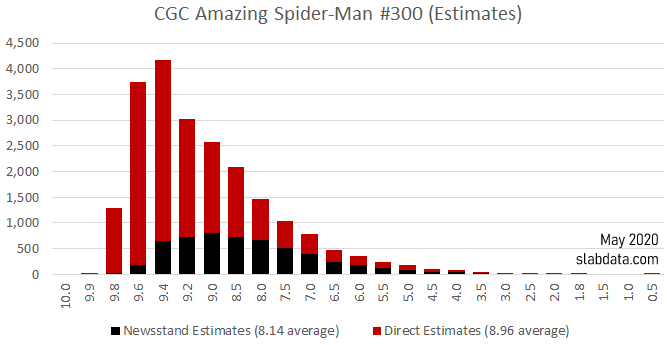
The lower average grade estimates for the full CGC Census (Newsstand 8.14, Direct 8.96) are attributed to the fact that lower grades do not appear in the Ebay.com market as often as the higher grades, relative to their CGC Census totals. Overall, the average grade remains 8.76 for all copies on the census.